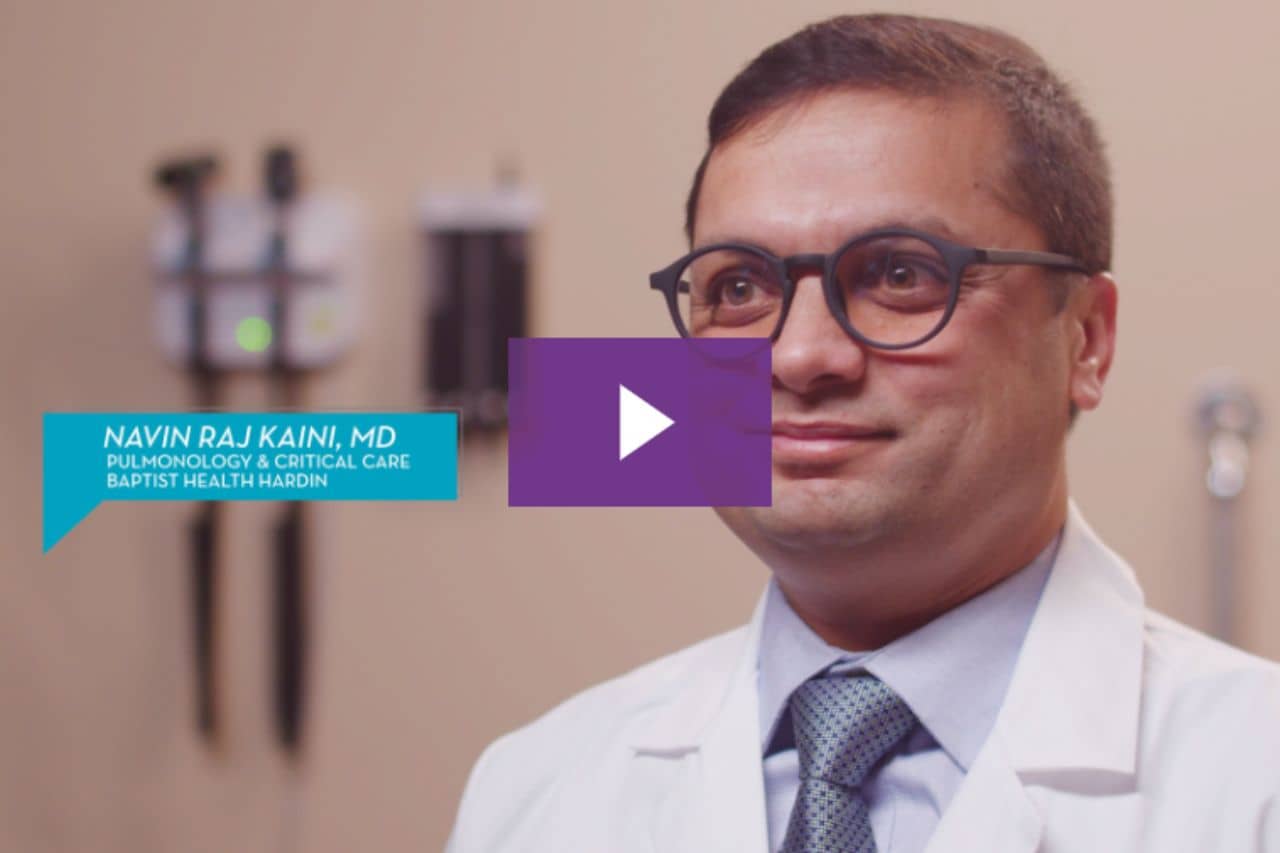Treating Pulmonary Embolism
Baptist Health Hardin: Treating Pulmonary Embolism
Pulmonary embolism is often caused by blood clots that travel to the lungs from the legs. Learn how the thrombectomy procedure at Baptist Health can help.
Clots consistently come from the veins of the lower extremities and will frequently embolize to the lung arteries, creating a pulmonary embolism. Typically, patients will present to the emergency room with concerning symptoms. Based on initial results and risk stratification by the emergency physician, a CT scan will ultimately be obtained of the chest to evaluate for the presence of a pulmonary embolism. If the CT scan shows a PE, I frequently get called for consideration of intervention.
A thrombectomy procedure begins with obtaining access in the common femoral vein in the groin. We then advance a catheter through the patient’s large vein in the abdomen, then through the right side of the heart, and ultimately into the lung arteries. We typically take angiograms to see exactly where the clots are and [what] the clot burden is, and then proceed with advancing a thrombectomy catheter to remove the clot.
Patients tend to do very well, and there really are no side effects of the procedure. As with any procedure, there are some risks, bleeding being the most significant one, but that’s been fairly rare in our experience.
It’s very exciting that we have this available at Baptist Health Hardin. I think it’s been a real game changer for a number of our patients and has definitely saved some lives. We’re very excited to be able to offer this to people in this region.
Next Steps and Useful Resources
Find a Provider
What Is a Pulmonary Embolism?
CT Scan vs X-Ray



